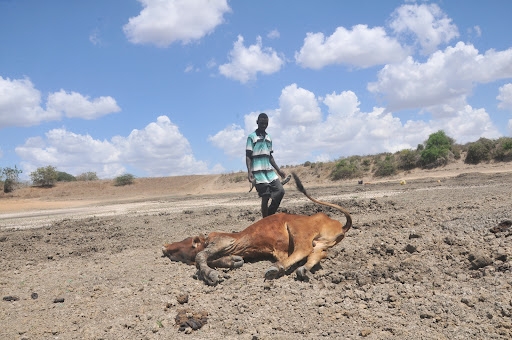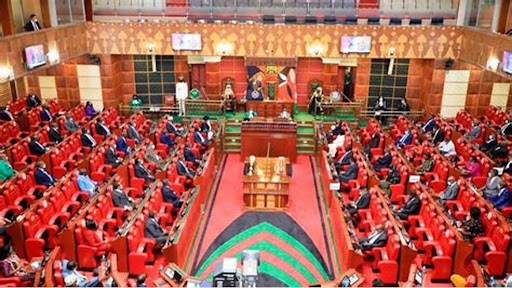Tough economic times, worsened by a weak shilling have seen traders cut on new orders, leading slightly improvement Kenya's balance of payment.
The latest economic outlook by NCBA Bank released Tuesday shows the country's import size shrunk by 1.6 per cent in the second quarter of the year, pushing the cumulative drop by nearly 14 per cent.
The shilling had by then weakened against the dollar by 22 per cent, making imports mainly paid for in dollars imports more expensive.
Yesterday, the shilling closed at a new low of 151.40 against the US dollar.
The outlook themed, 2024 Macroeconomic Outlook: Divergence Across Economies and Sectors' shows Kenya’s imports in the period fell by 13.8 per cent to $11.45 billion (Sh1.7 trillion) from $13.28 billion (Sh1.97 trillion) in the corresponding period of 2022.
The deficit – the gap between merchandise exports and imports – fell to Sh1.01 trillion ($6.8 billion) from nearly Sh1.12 trillion ($7.51 billion) a year ago.
Economists at NCBA tie the drop in imports to Kenya's rising inflation which rose to 6.9 per cent year-on-year in October, up from 6.8 per cent.
"A number of factors, including high fuel prices, poor agricultural production, and weak shilling. Even so, the inflation has started to ease and prospect looks brighter,'' the report reads in part.
Central Bank of Kenya (CBK) deputy Governor Susan Koech who was the chief guest supports NCBA’s position.
“The decline reflects the impact of monetary policy measures adopted by CBK, easing food prices attributed to favourable weather conditions, and the government measures to zero-rate key food imports and enhance food production through subsidy on fertiliser prices,'' Koech said.
She noted that the overall inflation has since declined from a peak of 9.6 per cent in October 2022 to 6.9 per cent in October 2023, which is within the CBK target range.
Food inflation eased to 7.8 per cent in October 2023 from a peak of 15.8 per cent in October 2022.
''Fuel inflation remained elevated at 14.8 per cent in October 2023, due to the recent increases in global oil prices and removal of unsustainable subsidies” " she added.
The NCBA Economic Forum projected the economy to grow up to six per cent in 2024, supported by a rebound in the agriculture sector, and the resilience of the services sector.
However, the unprecedented cost of living pressures negatively impacting household balance sheets will continue to push more people into economic challenges.
NCBA Group managing director, John Gachora said despite the biting cost of living challenge, significant progress continues to be made.
“We have seen the government roll out significant fiscal adjustments with an outlined multi-step fiscal consolidation path anchored at a target deficit of three per cent of GDP and a medium-term revenue strategy necessary to achieve long-term growth,'' Gachora said.
"With these “growth positive” adjustments, we now expect GDP to grow at 4.9 per cent in 2023 and maintain an upward trend into 2024. Overall, therefore, we, remain quite optimistic on 2024 prospects,” said Gachora.
He added that despite the global uncertainties, Kenya’s growth has remained strong and is expected to remain above the global and SSA averages in 2023 and 2024, pointing to the resilience and diversified nature of the economy.
The economy grew by 4.8 per cent in 2022, well above the sub-Saharan Africa region average growth of four per cent and the global average of 3.5 per cent.
The CBK expects the economy to grow by 5.5 per cent in 2023 and close to six per cent in 2024.
The GDP in Tanzania, Uganda and Rwanda is expected to grow by 6.1 per cent, 5.7 per cent and seven per cent respectively.
The report says that, for Kenyan enterprises with operations in the greater EAC markets, the strong economic performance across the East African markets should be good news for potential 2024 outcomes.
"More specifically for Kenya, though we expect the projected growth to come with pronounced divergence across the different economic sectors. We expect the services sector to register good performance in 2024,'' the report says.
Agricultural output is expected to expand by about five per cent with agro-export flows expected to remain within their long-term-average trend performance.
However, this could surprise on either side given the risk of weather volatility.
The manufacturing sector could remain weak at an annual growth of 2.6 per cent given the sustained household budgetary strain, while the overall infrastructure spend by both the government and private sector will see low growth of four per cent in the Construction sector.
NCBA noted that Kenya’s economic growth path potentially faces several challenges including foreign exchange pressure occasioned by weak shilling and low official FX reserves.
Others are uncertain weather conditions and persistently High Inflation, geopolitical risks characterised by heightened financial markets risks and Global commodity price volatility.
“However, the government seems on course to honour its external public debt obligations in 2024. With an on-going IMF program, Kenya is expected to benefit from improved market confidence into 2024,” NCBA concludes.














